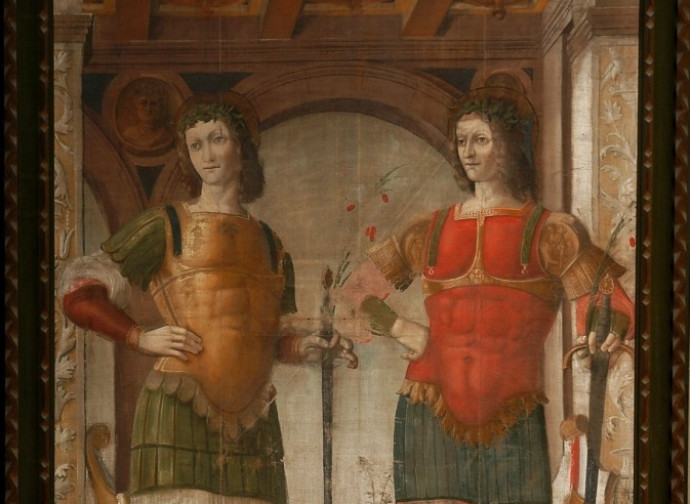Saints Protus and Hyacinth
They suffered martyrdom presumably during the persecutions of Valerian (257-260) or at the latest during the Great Persecution of Diocletian (303-305)

The brothers Protus and Hyacinth suffered martyrdom presumably during the persecutions of Valerian (257-260) or at the latest during the Great Persecution of Diocletian (303-305). They were then honoured by one of the famous Latin inscriptions of St Damasus (304-384), who had their sepulchres unearthed.
Regarding the facts of their lives, a rather late Passio reports that they were two eunuchs, slaves of Eugenia, daughter of a Roman nobleman who became prefect in Alexandria. The two converted Eugenia and her family to Christianity. The woman, on her return to Rome (where she was later martyred) with the two brothers, carried out a work of apostolate asking Protus and Hyacinth to instruct her friend Basilla (or Bassilla) in the truths of the faith. She in turn converted and, after being denounced by her fiancé, was martyred together with the two brothers.
Even before the eulogy by Damasus, there is evidence of their ancient cult in the Depositio martyrum, dating back to 336, which commemorates them on 11 September and recalls their burial in Basillae, i.e. in the Catacombs of Saint Hermes, as they are best known today. It was in this cemetery along the Via Salaria Vetus that Pope Damasus intervened, bringing to light the tombs of Protus and Hyacinth, which had been hidden by landslides. In fact, the inscription of the pontiff reads: “The tomb was hidden under the landslide of the hill. Damasus brings it to light because it preserves the bodies of martyrs. The most worthy palace, that of the sky, keeps Protus within it. You, Hyacinth, follow him, justified by the purple blood. They were brothers, both magnanimous. This one, victorious, conquered the palm, the other one first the crown”, with a possible poetic wordplay on the meaning of Protus (“first”).
The inscriptions made by the presbyters Theodore and Leopardus, respectively during the pontificates of Siricius (384-399) and Symmachus (498-514), testify to other interventions to facilitate the access of the faithful to the tombs of Protus and Hyacinth. Then there were the translations of the VIII-IX centuries, when the popes had the majority of the relics of the martyrs moved from the catacombs to the churches. At the same time, it was commonly believed that the remains of the two saintly brothers were found together in the Roman basilica of San Giovanni Battista dei Fiorentini, but on 21 March 1845 it was discovered that in reality this church held only the bones of Protus. That day the Jesuit archaeologist Giuseppe Marchi discovered, with the help of a ditcher (the person in charge of maintenance and excavations in the cemeteries), a simple Latin inscription from which the following information was obtained: “Hyacinth martyr, buried on September 11”.
To great surprise, the tomb of Hyacinth was found intact in all its parts and it was understood that it had been ‘spared’ from previous translations because it was not visible. Of Protus' tomb, however, only a fragment remained (with the inscription sepulcrum Proti M). Hyacinth’s bones were found singed, a sign of the martyrdom he had to suffer, and are now kept in the chapel of today's Pontifical Urban University.


